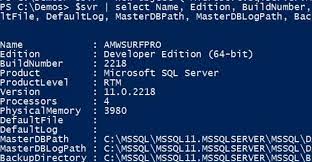To discover and install new modules from the PowerShell Gallery, you can follow these steps:
- Open a PowerShell session: Launch PowerShell on your computer. You can find it in the Start menu or by searching for “PowerShell”.
- Set the PSGallery as a trusted repository: By default, PowerShell only trusts modules from known publishers. To enable installation from the PowerShell Gallery, you need to set it as a trusted repository. Use the following command to do so:
Set-PSRepository -Name "PSGallery" -InstallationPolicy "Trusted"This command will set the PSGallery as a trusted repository.
- Search for modules: Use the
Find-Modulecommand to search for modules in the PowerShell Gallery. For example, if you are looking for a module related to Azure, you can use the following command:
Find-Module -Name "*Azure*"This command will search for modules with “Azure” in their name.
- Browse module details: Review the search results to find the module that best fits your needs. Pay attention to the module’s description, version, release date, and download count. You can use the
Get-Modulecommand to get more details about a specific module. For example:
Get-Module -Name AzureRMThis command will show detailed information about the “AzureRM” module.
- Install a module: Once you have identified the module you want to install, use the
Install-Modulecommand followed by the module name. For example:
Install-Module -Name AzureRMThis command will download and install the “AzureRM” module.
- Import and use the module: After the module is installed, you can import it into your PowerShell session using the
Import-Modulecommand. For example:
Import-Module -Name AzureRMDiscovering and installing new modules from the PowerShell Gallery is a great way to expand your PowerShell capabilities. The PowerShell Gallery is a central repository for PowerShell modules, scripts, and DSC resources. Here’s how you can discover and install new modules from the PowerShell Gallery:
Search for Modules:
You can search for modules on the PowerShell Gallery website (https://www.powershellgallery.com/) or by using the Find-Module cmdlet in PowerShell.
To search for modules using the Find-Module cmdlet, open a PowerShell session and run the following command:
Find-Module -Name ModuleName
Replace "ModuleName" with the name of the module you want to search for. You can also use wildcards in the module name for more flexibility.
Install Modules:
Once you have identified the module you want to install, you can use the Install-Module cmdlet to download and install it. Here's an example:
Install-Module -Name ModuleNameReplace “ModuleName” with the name of the module you want to install. You can specify the version of the module by using the -Version parameter if needed.
By default, modules are installed for the current user. If you want to install a module for all users on the system, you can use the -Scope AllUsers parameter.
Update Modules:
It’s a good practice to keep your installed modules up to date. You can use the Update-Module cmdlet to update installed modules. Here’s an example:
Update-Module -Name ModuleName
Replace "ModuleName" with the name of the module you want to update. If you want to update all installed modules, you can omit the module name.
You can also use the `-All` parameter with `Update-Module` to update all installed modules.
Uninstall Modules:
If you no longer need a module, you can uninstall it using the Uninstall-Module cmdlet. Here's an example:
livecodeserver
Uninstall-Module -Name ModuleNameReplace “ModuleName” with the name of the module you want to uninstall.
Similar to the installation process, you can use the -AllUsers parameter to uninstall a module for all users.
Remember to run PowerShell with administrative privileges (Run as Administrator) if you encounter permission issues during module installation or update.
By leveraging the PowerShell Gallery, you can easily discover, install, update, and remove modules to enhance your PowerShell scripting and automation capabilities.
This command will import the “AzureRM” module, making it available for use in your scripts.
Remember to keep the installed modules up to date by regularly checking for new versions. You can use the Update-Module command to update installed modules.
Learning PowerShell and exploring the PowerShell Gallery will help you discover modules that can extend PowerShell’s functionality and simplify your scripting and automation tasks.
